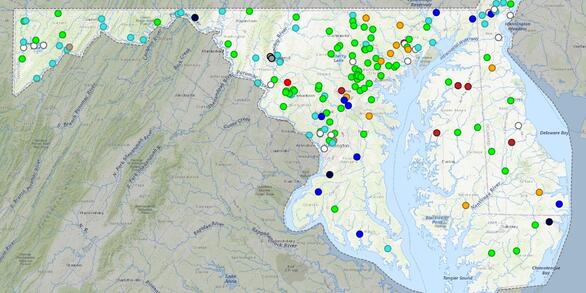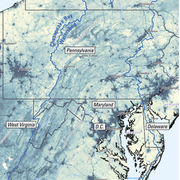Welcome to the MD-DE-DC Water Science Center
Consider this site your source for water-related information, collected and interpreted by the USGS in MD, DE, and Washington, DC
Explore our Scientific Expertise
We work with our partners to study important water issues facing the nation.
Access data from our streamgages and wells
Explore real-time streamflow, water-quality, and groundwater conditions for Maryland, Delaware, and Washington, D.C.
USGS WaterAlert
Get notifications for changes in water conditions based on thresholds you choose.
Soaking Up Stormwater In Clarksburg
A 20-year study by the U.S. Geological Survey and Montgomery County, Maryland assesses ecosystem response to different types of stormwater management.
Maryland-Delaware-D.C. Water Science Center
We are your go to source for water monitoring and research in the nation’s Capital region. Operating streamgages, observation wells, and monitoring stations, we collect scientific data that supports both real-time monitoring and long-term research, delivering reliable information essential for understanding and managing our natural water resources.






